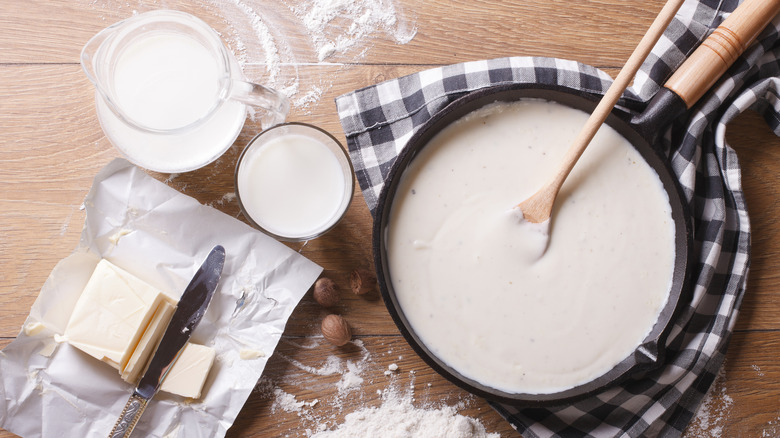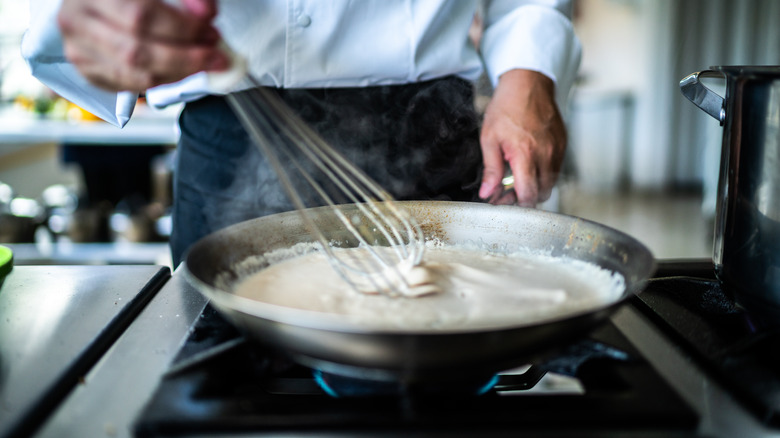Don't Forget To Warm Up The Milk For Top-Notch Béchamel Sauce
Despite how intimidating the name might sound, you don't need to be a Michelin-level cook to make top-notch béchamel sauce at home. Effectively just a butter-based roux combined with milk, béchamel is a sauce that budding home cooks are likely to run into at some point, as it's essential for making dishes like homemade lasagna and mac and cheese. Considered one of the mother sauces of French cuisine, béchamel is a foundational ingredient that will open up your cooking game when you can reliably make it the right way.
There are some common mistakes people make when cooking béchamel sauce, but a little bit of foresight and preparation goes a long way when you're standing over a hot stove. One of the easiest things you can do is to have your milk warmed up and ready to go before you start. To do this, you can either heat the portioned milk in a small saucepan on the stove and let it sit at low heat to maintain its warm temperature, or you can simply microwave it until it's ready. Using warm milk ensures that it won't splatter onto your countertop from the sudden temperature spike that occurs when cold liquids touch a really hot pan. Just remember to stay near your sauce at all times, because losing control of the temperature and not stirring it constantly will cause it to burn.
More temperature tips for top-notch béchamel sauce
Even if you're careful to use heated milk and have a perfect technique with your whisk, your béchamel sauce may still fall victim to lumpiness. Lumps in a sauce are caused by the flour in the roux not being able to fully absorb a liquid and create a uniformly gelatinous texture. When the starch doesn't have the proper time to break down, it forms little clumps in the sauce that will ruin your perfect béchamel. The trick, therefore, is to combine your warmed milk with a cold roux. The temperature disparity between these two main ingredients will give the starch enough time to disperse, as opposed to using hot milk and hot roux which instantly melts the butter surrounding the flour granules making them lumpy.
To make a cold roux, you simply need to prep it ahead of time. Make a roux, gather it in a ball, and store it in an airtight in the refrigerator to cool. You can do this a day or two in advance, which saves you time on the day you need to cook your béchamel sauce. When you're ready to bring it all together, heat your saucepan and drop the cold roux inside once it's ready. Finally, you can add your tempered milk in stages, being sure to use a little elbow grease to keep working the sauce so that it can develop the luscious texture you'd expect from top-notch béchamel sauce.

